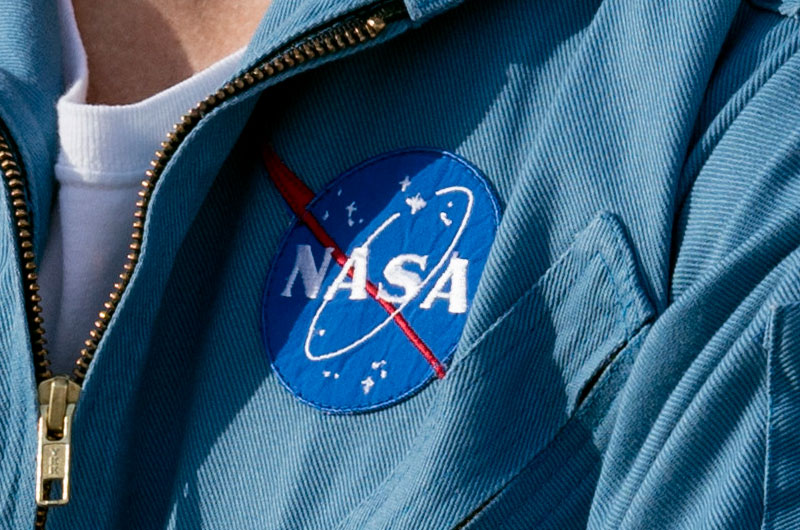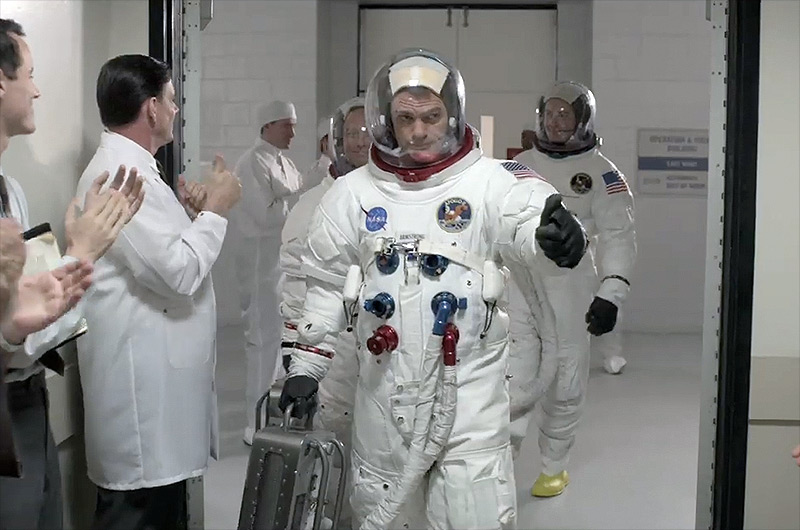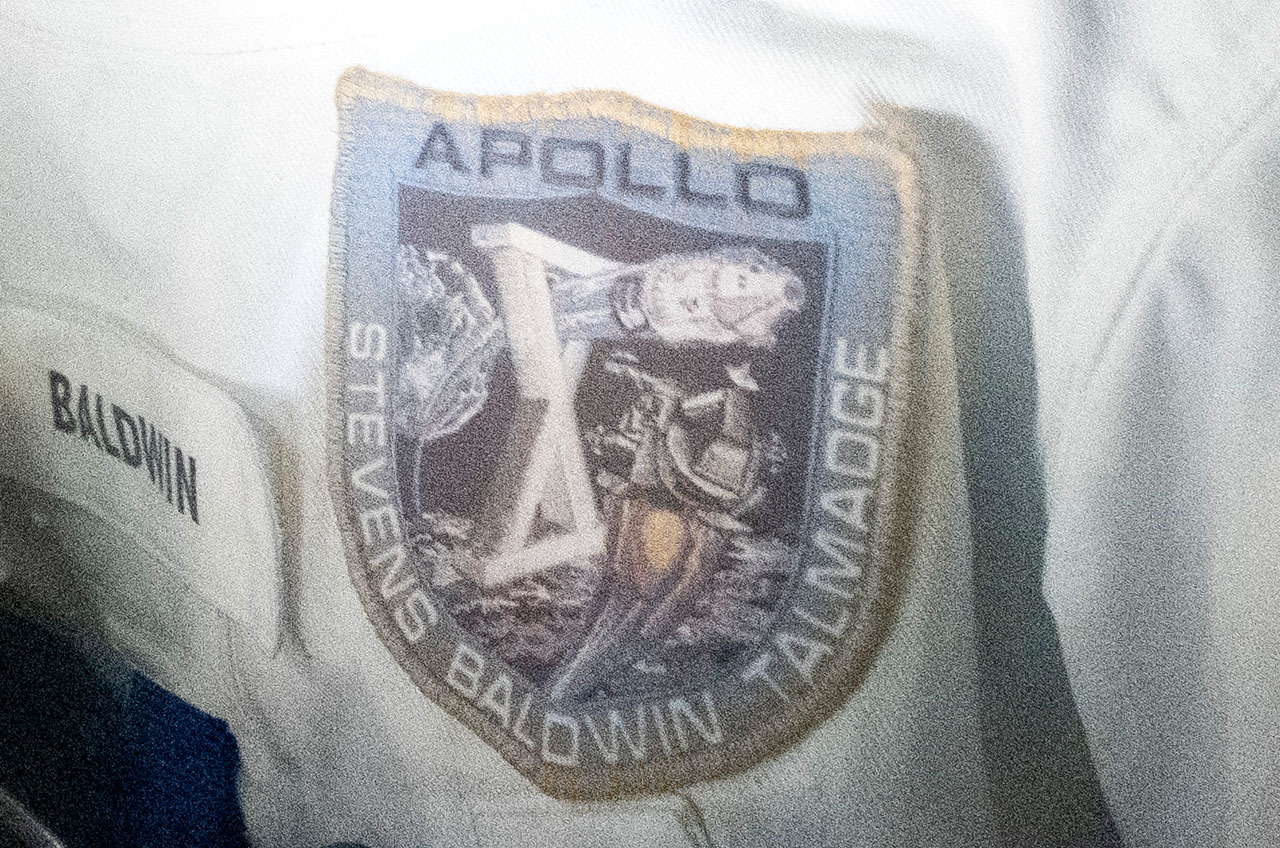Beyond the Red Moon: Apple TV+ Changes NASA History in 'For All Mankind'

When the Soviet Union beats the United States to landing the first human on the moon, it changes the course of the space race in the new Apple TV+ series "For All Mankind." But that is not the only departure from NASA history as the show begins.
Cosmonaut Alexei Leonov's unexpected touchdown on June 26, 1969, just weeks before NASA's Apollo 11 mission was scheduled to do the same, serves as the catalyst for what follows in the Ronald D. Moore alternate history. But as revealed in the series' first three episodes — which are now available to stream with the launch of Apple's video service on Friday (Nov. 1) — the "Red Moon" is met by a different NASA than the one that actually landed the first astronauts on the lunar surface 50 years ago.
Spoiler warning: What follows reveals minor details from the opening episodes of "For All Mankind."
Related: 'For All Mankind' Recruits Women Astronauts for Moon Landing

Roll Call
In real life, NASA's astronaut corps numbered more than 50 men, including four of the original Mercury 7, by June 1969.
In "For All Mankind," it is not clear how many of the real-life astronauts are part of the program. Neil Armstrong, Buzz Aldrin and Michael Collins (as portrayed by Jeff Branson, Chris Agos and Ryan Kennedy) are still there to crew Apollo 11, Pete Conrad (Steven Pritchard) and Charlie Duke (Ben Begley) are referred to by name and Deke Slayton (Chris Bauer) is a central figure, as he was in reality, as director of flight crew operations.
From what is said, Gus Grissom, Ed White and Roger Chaffee are still tragically the victims of a fire on the launch pad while preparing for their Apollo 1 mission.
Get the Space.com Newsletter
Breaking space news, the latest updates on rocket launches, skywatching events and more!
Among the missing, though, is Alan Shepard, America's first astronaut in space. In real life, Shepard had been grounded after his suborbital Mercury flight due to an inner ear disorder, but returned to flight status in May 1969.
"For All Mankind" leaves Shepard's status unclear.
"Glad Al Shepard is not here today," says Slayton (Bauer) in the first episode, with no other indication if it is temporary or permanent absence.
Other astronauts have been replaced by fictional characters. The Apollo 10 crew is introduced as Edward Baldwin and Gordo Stevens (Joel Kinnaman and Michael Dorman), instead of Thomas Stafford and Eugene Cernan. (Apollo 10's third crew member, supplanting John Young, is only seen by last name on an altered mission patch — "Talmadge.")

Role call
In addition to the astronauts, several real-life figures from NASA management are portrayed in "For All Mankind," though not all in the roles they actually held.
Thomas Paine, NASA's administrator in 1969, is played by Dan Donohue. Flight director Gene Kranz leads the "White" team in Mission Control, as he did in reality, as played by Eric Laden.
In episode three, "Nixon's Women," Shorty Powers (Brian Stepanek) appears as NASA's public affairs officer. The real Powers served in that role, but only during the Mercury program. He left NASA in 1963. His Apollo counterparts were Julian Scheer, Doug Ward and John McLeish, who are all omitted from the series.
Other Apollo leaders absent from "For All Mankind" include spacecraft program manager George Low and Robert Gilruth, the director of the Manned Spacecraft Center (MSC), known today as the Johnson Space Center. Both men's roles are folded into the series' depiction of another high-profile NASA official.
Wernher von Braun, the German rocket scientist who led the development of the Saturn V moon booster, is reassigned in "For All Mankind" from the Marshall Space Flight Center in Alabama to serving as the director of the MSC in Houston.
"I miss the barbecue back in Huntsville," says Colm Feore, portraying von Braun.
The series' von Braun also stands in for the real-life MSC deputy director in 1969, Chris Kraft, who is also absent.
One other change is the presence of Margo Madison (Wrenn Schmidt) as an engineer working in Mission Control. She is a fictional character, but in an early scene in the first episode, she offers a nod to the reality.
As she heads into the Mission Operations Control Room, Madison says good morning to another woman, "Poppy," as she passes her in the hallway. "Poppy" is almost certainly a reference to the real first woman to work in a technical role in Apollo Mission Control, Poppy Northcutt.
Last call
There are many more changes to space history that come as a result of the Soviet moon landing in "For All Mankind," but here are a few more details that cannot be traced back to that pivotal event in the series.
- The astronauts retire to The Outpost Tavern as their local bar. The Outpost was a real place and a popular NASA hangout until it went out of business in 2009 (a fire destroyed the building a year later). But it did not become The Outpost until 1981. At the time of the Apollo missions, it was known as Fort Terry's The Universal Joint.
- Mention is made of two Soviet N-1 rocket test launches, one in January and the other in June 1969, the latter carrying Leonov to the moon. In reality, there was only one launch up to that date, on Feb. 21, 1969, that failed 70 seconds into flight. The next attempt, which failed at liftoff, took place on July 3. (The Soviets tried twice more, with launches in June 1971 and November 1972, both of which ended in failure.)
- The Apollo 10 mission patch (referred to earlier) is not the only insignia to change prior to Leonov's moonwalk. The NASA logo, affectionately referred to as the "meatball," is almost the same in "For All Mankind" as it is in real-life, but its red vector points the opposite direction. There is no in-universe explanation for this change. According to Ronald D. Moore, it was done by the production to avoid needing the real NASA's permission for use.
"For All Mankind" is now streaming on the Apple TV+ service. The first three episodes were posted on Friday, Nov. 1, with new episodes to be released weekly.
- What Was the Space Race?
- NASA: 60 Years of Space Exploration
- The Top 10 Soviet and Russian Space Missions
Follow collectSPACE.com on Facebook and on Twitter at @collectSPACE. Copyright 2019 collectSPACE.com. All rights reserved.
Join our Space Forums to keep talking space on the latest missions, night sky and more! And if you have a news tip, correction or comment, let us know at: community@space.com.

Robert Pearlman is a space historian, journalist and the founder and editor of collectSPACE.com, a daily news publication and community devoted to space history with a particular focus on how and where space exploration intersects with pop culture. Pearlman is also a contributing writer for Space.com and co-author of "Space Stations: The Art, Science, and Reality of Working in Space” published by Smithsonian Books in 2018.In 2009, he was inducted into the U.S. Space Camp Hall of Fame in Huntsville, Alabama. In 2021, he was honored by the American Astronautical Society with the Ordway Award for Sustained Excellence in Spaceflight History. In 2023, the National Space Club Florida Committee recognized Pearlman with the Kolcum News and Communications Award for excellence in telling the space story along the Space Coast and throughout the world.










